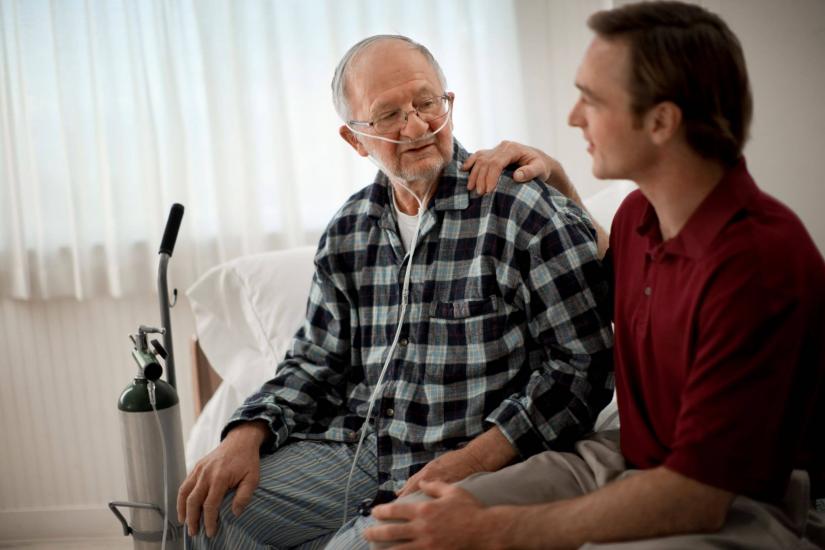
Man receiving oxygen therapy and carer
In summary
- An NHMRC grant is funding PaCCSC participation in an international, multi-disciplinary consortium researching better treatments for breathlessness in palliative care.
- An existing medication is being investigated to find relief for the tens of thousands of Australians impacted by breathlessness every day.
The Palliative Care Clinical Studies Collaborative (PaCCSC), a UTS Health Research Centre, has received an NHMRC grant of over $499,000 to boost research into a treatment for chronic breathlessness.
Chronic breathlessness is a widespread and frightening condition that has a major detrimental impact on patients' quality of life. It is distressing for patients as well as family, friends and caregivers.
The BETTER-B (BETter Treatments for Refractory and chronic Breathlessness) consortium is comprised of 13 international partners including PaCCSC. The BETTER-B programme aims to significantly improve the treatment of severe breathlessness in patients with advanced disease.
Professor David Currow, Professor of Palliative Medicine in the UTS Faculty of Health, is the PaCCSC Chief Investigator and a global leader in improving the delivery of palliative care.
Professor Currow said, 'It is imperative to pursue studies of existing medications that may benefit the tens of thousands of Australians impacted by breathlessness every day. This grant will fund research into chronic breathlessness caused by conditions like chronic obstructive pulmonary disease (COPD) and interstitial lung disease (ILD).'
This research will investigate whether mirtazapine, currently used as an antidepressant, is an effective treatment for chronic breathlessness. As an existing medicine, mirtazapine could be a cost-effective approach for treatment that could be implemented and sustained internationally.
If the study is positive, the outcomes will directly affect clinical practice and immediately improve outcomes for the many Australians in the community who are living with chronic breathlessness. They would be able to spend less time in hospital, less time in emergency departments, and more time at home and in the community.

